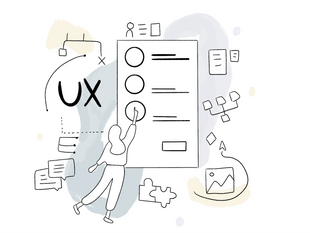
How to Conduct Effective Remote Usability Testing for UX Research
Sep 5, 2024
3 min read
0
6
0

As UX professionals, we frequently depend on assumptions and our knowledge to create products. Nonetheless, testing our designs with actual users is essential for guaranteeing the effectiveness of our creations. User experience (UX) research helps us grasp how users engage with our products or services.
With the rise of remote work and digital tools, remote usability testing has become a preferred method for gathering this valuable information. It is not only more cost-effective but also faster and easier to set up. Here’s how to plan a series of tests to evaluate and improve the user experience.
What is Usability Testing?
Usability testing involves observing users interacting with a product or service to evaluate it. Participants are asked to complete a series of specific tasks, and observers assess whether they can accomplish them according to predefined criteria. After the tests, qualitative data (observations, comments) and quantitative data (time spent, success rate) are collected to identify the product’s strengths and weaknesses. The goal is to make improvements based on concrete data to increase product satisfaction and adoption.
These tests can be conducted at any stage of development, whether to validate initial concepts or to improve an existing product.
Why Choose Remote Testing?
Remote testing offers many advantages:
Easier Recruitment: Reach a wide range of participants, regardless of their location.
Cost Savings: Eliminate costs related to travel, venue rentals, and equipment.
Participant Comfort: They are more comfortable in their own environment.
Flexibility: Plan and conduct tests more quickly.
Advanced Tools: Session recordings, mouse movement tracking, note-taking, transcription...
Types of Remote Usability Tests
There are two main methods:
Moderated: A facilitator guides the participants, asks questions, and observes in real-time. This provides rich qualitative data but requires more time and resources.
Unmoderated: Participants complete tasks independently, with their actions and thoughts recorded. It is faster and more economical, but feedback may be less in-depth.
How to Plan Remote Usability Tests
1. Define Your Goals: What do you want to evaluate? Navigation, understanding of features, overall satisfaction?
2. Recruit Participants: Choose people representative of your target audience.
3. Design Tasks: Create realistic scenarios that reflect typical use of your product.
Adapting Tests According to Product Maturity
Exploration Phase: Test simple mockups to validate ideas.
Evaluation Phase: Assess the usability of new features with a prototype.
Comparison: Compare multiple prototypes to identify the best one.
Continuous Improvement: Test the final product to optimize it.
How to Define Test Scenarios
A user scenario describes a sequence of actions a user takes to accomplish a task. Write 5 to 8 scenarios of increasing difficulty, starting with the simplest.
Example for an agricultural app:
“You have just harvested 10 tons of wheat. Record this harvest in the app, specifying the quantity, quality, date, and plot.”
Preparing for Your Welcome
To properly welcome a participant in a remote usability test, start by warmly greeting them on the video call and introduce yourself. Thank them for their participation and ensure they are comfortable with the technology being used. Briefly explain the test procedure and assure them their responses will remain confidential. Encourage them to think aloud and ask questions at any time.
After the Tests
Analyzing the results after a usability test is crucial for improving a product. By grouping observations, recordings, and questionnaire responses, recurring problems and their impacts are identified. Using analysis tools, organize the data to highlight key gaps. Synthesizing this information into a clear report helps prioritize the necessary actions to enhance the user experience and effectively evolve the product.
Taking Action
It’s now time to make improvements to the product. The test results will help fix issues in your application.
Conclusion
Remote usability testing is a major asset for improving user experience. It provides valuable insights to guide your design decisions. Carefully plan your tests, choose the appropriate method, and use the collected data to create a product that truly meets your users’ needs.





